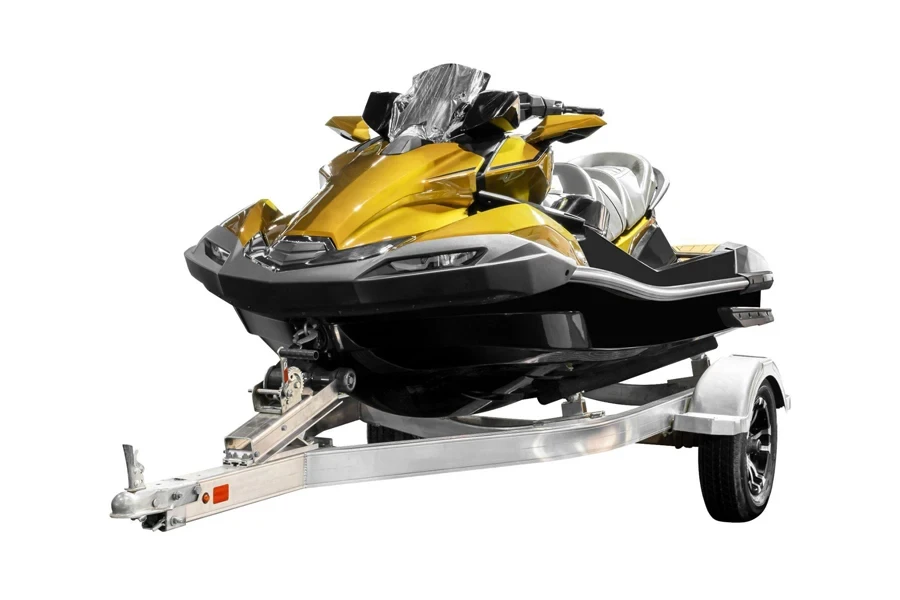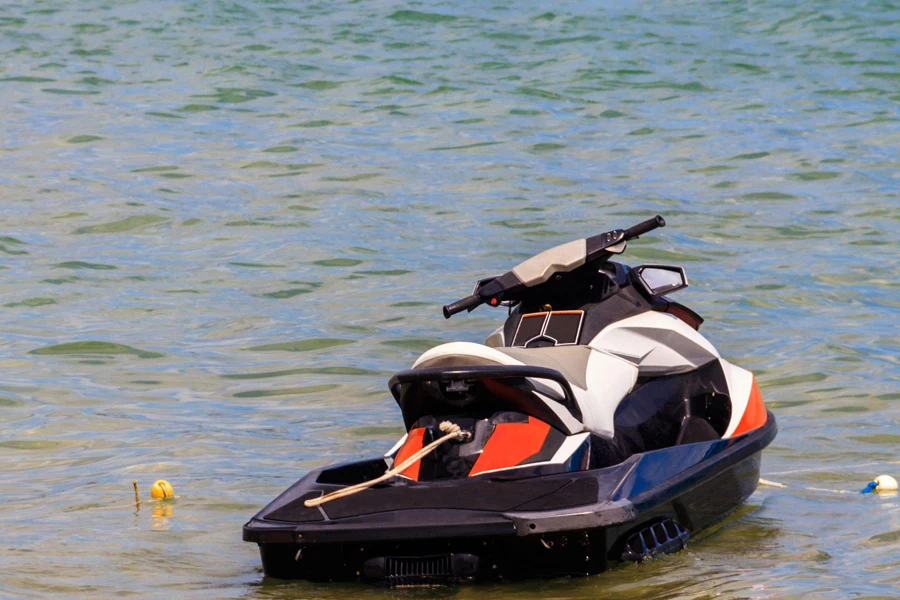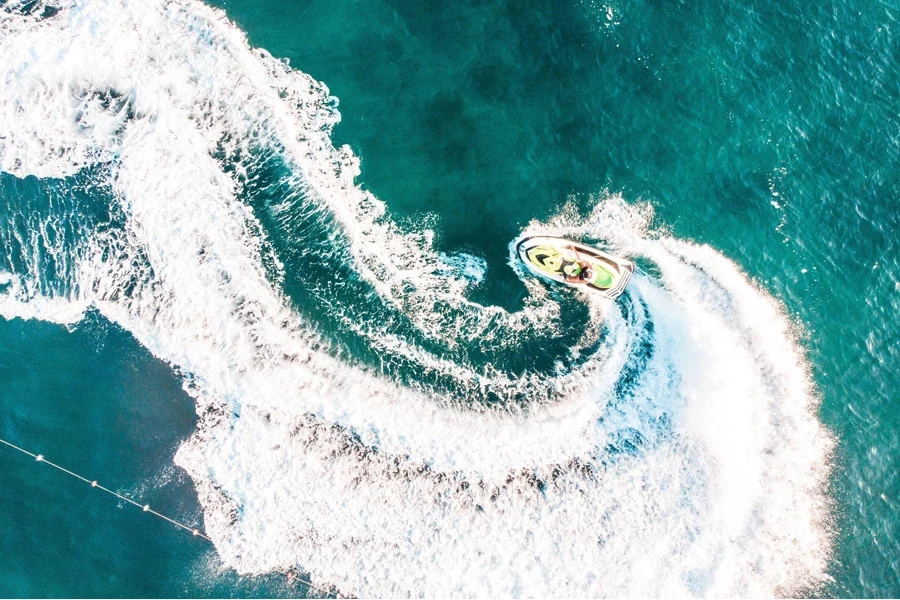Table of Contents
– Introduction
– Market Overview
– Pioneering Technology and Design
– Leading Models and Market Influencers
– Conclusion
Introduction
The Jet Ski industry is surging ahead in 2024, buoyed by technological advancements and a growing enthusiast base. This article explores the latest trends that are defining the future of personal watercraft. Hopefully, online retailers can find inspiration and gain new profit through reading it.
Emerging Trends of Jet Ski Market
The global jet ski market was valued at USD 2.5 billion in 2021 and is projected to grow at a CAGR of 4.5% from 2022 to 2029. North America is the largest market for jet skis, accounting for over 40% of global revenue.
Detailed Categories of Jet Skis:
- Rec-lite: Compact and lightweight, ideal for beginners or those seeking an affordable, easy-to-handle option.
- Recreation: Offers a balance between performance and comfort, perfect for casual riding with moderate speed and features.
- Performance: Designed for speed and agility, these jet skis cater to enthusiasts looking for high-speed thrills and competitive racing.
- Luxury/Touring: Equipped with high-end comfort and technology features for long rides, emphasizing smooth performance and rider comfort.

- Tow Sport: Specifically designed for towing sports, such as wakeboarding and water skiing, with features to support these activities.
- Sport Fishing: Outfitted with fishing amenities for anglers, including GPS, rod holders, and cooler storage, combining sport and utility.
- Freestyle Sit-Down (“Sport Class”): Agile and maneuverable, these are designed for tricks, jumps, and competitive freestyle events.
- Electric: The newest category, offering eco-friendly, battery-powered jet skis for a quieter and cleaner water sports experience.
The recreation segment, in particular, has seen a 40% market share due to professional competitions and events.

The jet ski market is dominated by a few major players that have established a strong presence globally. These companies are Kawasaki, Yamaha, and Sea-Doo. Yamaha is a significant player, holding a substantial market share of 46.23% in 2020. Yamaha is renowned for its continuous innovation and the introduction of advanced technologies to enhance the riding experience. Its jet skis are popular among both enthusiasts and professional riders.
Emerging trends in the jet ski market include a growing demand for electric jet skis, which are favored for their environmental friendliness and quieter operation. There is also a shift towards personalization and customization, allowing manufacturers to tailor jet skis according to individual preferences. Additionally, there is an increasing focus on safety features, such as intelligent braking systems and advanced navigation technologies. The market is also seeing a rise in the popularity of compact and lightweight jet skis, making them more accessible and easier to transport.
Pioneering Technology and Design
Eco-Friendly Engines
In the personal watercraft market, there’s a clear shift towards sustainable solutions, prominently seen in the rise of electric jet skis. These eco-friendly alternatives offer significant advantages over traditional gasoline models, including zero emissions and quieter operation, making them appealing to environmentally conscious buyers. By adopting electric propulsion, these jet skis reduce the carbon footprint of water-based activities and help protect aquatic ecosystems from pollution, aligning with global environmental goals.

Electric jet skis combine environmental benefits with high performance, featuring efficient motors for rapid acceleration and advanced battery technology for long-lasting use. This evolution towards electric models signifies the industry’s commitment to innovation and sustainability, appealing to consumers looking for greener recreational options. As manufacturers focus on eco-friendly technologies, they not only address environmental concerns but also position themselves at the forefront of the industry’s shift to a more sustainable future, meeting the growing demand for cleaner, more responsible watercraft.
Advanced Safety Features
Safety in personal watercraft continues to be paramount, with manufacturers integrating advanced features such as intelligent braking systems and stability controls to enhance both rider safety and the overall experience. Innovations have expanded to include electronic reverse systems to aid in rapid stopping, minimizing collision risks. Additionally, automatic off-throttle steering support maintains maneuverability during sudden deceleration, critical for avoiding obstacles. These advancements, coupled with mandatory use of safety lanyards that cut off the engine if the rider falls off, significantly improve safety measures. Moreover, the design evolution towards more stable, anti-roll hull designs ensures a safer ride in various water conditions.

Design and Comfort
Modern Jet Skis are engineered with ergonomic designs that harmonize comfort with high performance. These watercraft come equipped with adjustable seating and user-friendly control systems, accommodating riders of all skill levels. The adjustable seats allow for a personalized fit that enhances stability and control during operation, while the intuitive controls ensure easy maneuverability and responsiveness. This thoughtful integration of comfort and performance features makes the latest Jet Skis appealing to both beginners and seasoned enthusiasts, offering an inclusive and enjoyable riding experience.
Leading Models and Market Influencers
Sea-Doo’s RXT-X 325
The Sea-Doo RXT-X 325 is a high-performance watercraft that boasts 325 horsepower, providing an adrenaline-filled experience for riders. It features a revolutionary hull design known as the ST3 Hull, which is intelligently designed to offer maximum control in various water conditions. The Ergolock seating system is another rider-inspired feature that enhances comfort and control during high-speed maneuvers.

The RXT-X 325 is equipped with a Rotax 1630 ACE™ – 325 hp engine, which is supercharged with an external intercooler, and it has a closed-loop cooling system (CLCS) for efficient engine temperature management. The watercraft can accommodate up to 3 riders and offers a total storage capacity of 26.1 gallons. It is constructed with a fiberglass hull and includes features such as the iBR® (Intelligent Brake & Reverse), Extended VTS™ (Variable Trim System), and a large panoramic 7.8″ wide LCD display for the gauge. The starting price for the 2024 RXT-X 325 is $19,999.
Kawasaki’s Ultra Series
The Kawasaki Jet Ski® Ultra® 310LX is a luxury personal watercraft that comes with a heat-resistant LXury seat and a JETSOUND® 4S audio system with four integrated speakers. It is powered by a 1498cc supercharged and intercooled engine, which provides thrilling performance on the water. The watercraft features a 3-position ERGO-FIT® adjustable LXury seat for rider comfort and customization. The propulsion system includes a 160mm jet pump and a 3-blade, oval-edge stainless steel impeller. The Ultra 310LX has a fuel capacity of 21.1 gallons and a total storage capacity of 44.5 gallons. It can seat up to 3 people and has a curb weight of 1,089.3 lb. The MSRP for the 2024 model is $21,199.

Yamaha’s High-Performance Models
Yamaha’s GP1800R SVHO is a high-performance model that is known for its top speed and handling. It is powered by a 1.8L supercharged, Super Vortex High Output Marine engine, which is the most powerful engine in the WaveRunner lineup. The GP SVHO™ is race-ready right out of the box and features a Connext touchscreen with Drive Control for customizing the ride. It also has a race-proven hull and deck design that provides improved ergonomics and comfort. The watercraft includes a high-performance intake grate and jet pump for better acceleration and less cavitation in choppy water conditions. Additionally, the GP SVHO™ is available with a factory-installed, integrated audio system and has options for additional storage and accessories.
Conclusion
The Jet Ski market in 2024 is characterized by a blend of innovation, performance, and luxury. As the industry continues to evolve, these trends are likely to shape consumer preferences and drive future market growth. If you want to see more articles on Sports, please remember to hit the “Subscribe” button.




